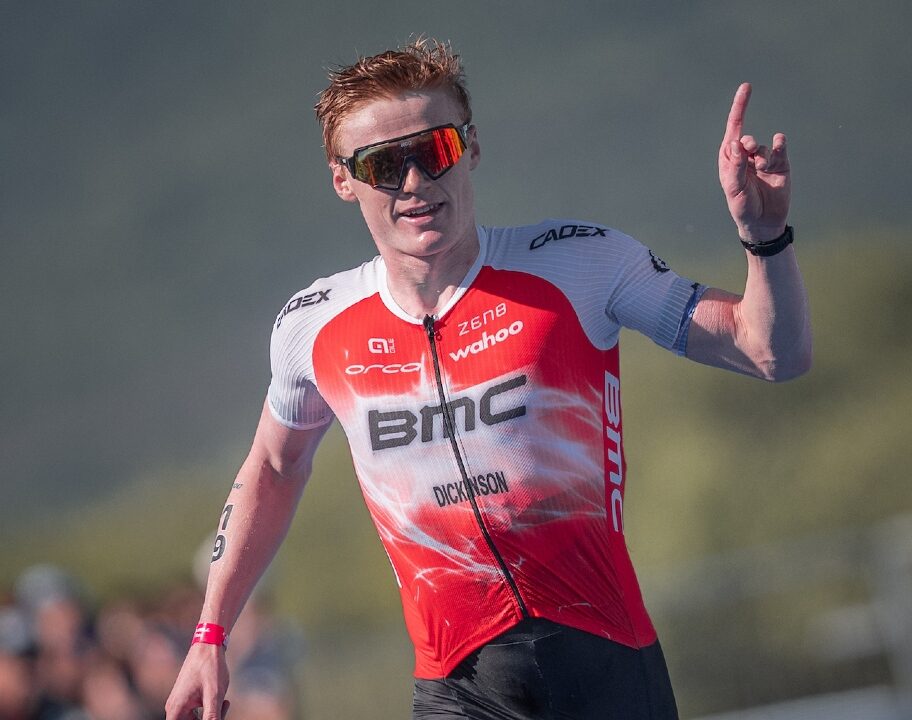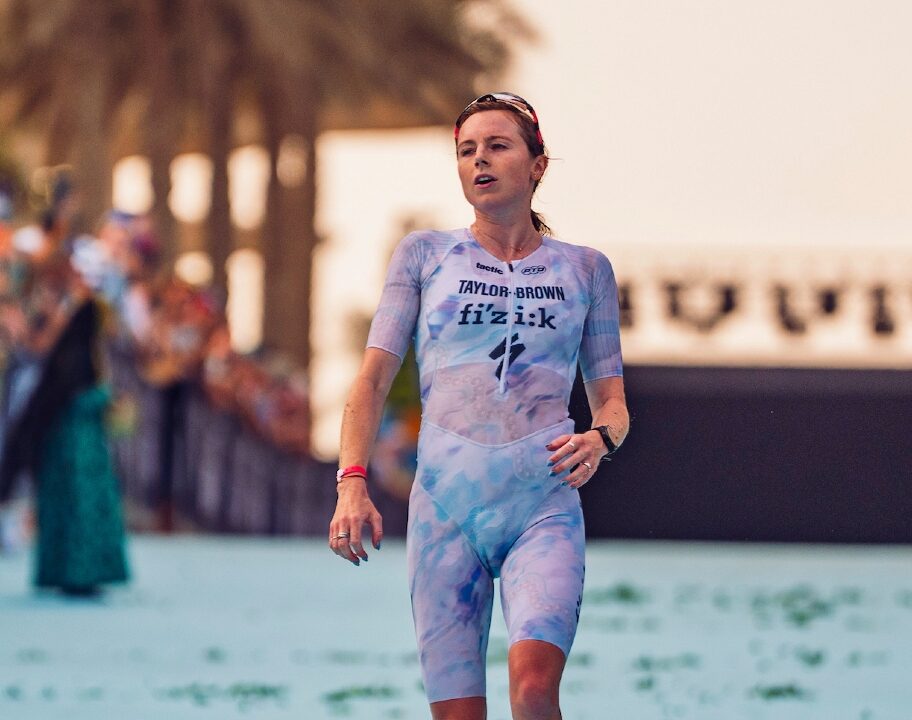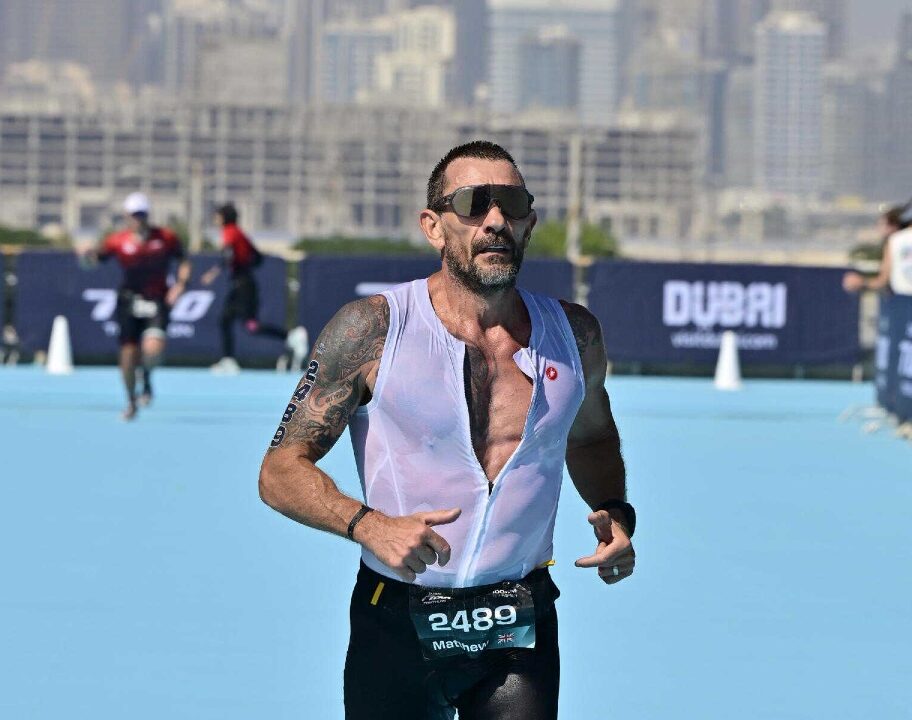ROUVY is an indoor cycling app which has grown in popularity in recent years, thanks to it’s focus on allowing riders to explore real life routes – from the comfort of home. But if you’re just getting to grips with the platform, knowing how to get started and what workouts to do can be a bit overwhelming.
We spoke to top PRO triathlete and avid ROUVY rider Fred Funk to get his top tips for using the platform.
Getting started on ROUVY – ‘the bigger the better’
Getting set up on ROUVY is pretty straight forward – simple create an account, choose a plan (or sign up for the free trial option) and download the app. From there, you’ll be guided through pairing your smart trainer and any other sensors. But once you’re hooked up and ready to go – what else do you need to know? We asked Fred for his top tips for getting started on ROUVY.
Set up
“The bigger the screen, the better the experience!” says Fred. ROUVY’s USP compared to other platforms such as Zwift is the augmented reality, high quality videos which allow you to ride ‘real routes’ from home. So it makes sense to make the most of it by upgrading your set up and having a big screen so you can be fully immersed in the graphics. ROUVY is compatible with Apple TV as well as phones, tablets and laptops so you can easily hook it up to display on a TV screen.
Join the ROUVY challenges
While ROUVY is centred around virtual reality, rather than the pure gamification element of Zwift, you can still earn coins to upgrade your virtual bike set up. And Fred says the best way to do that – and to keep yourself motivated when you’re just starting out on the platform – is to get involved with the various challenges you can join.

“Join the challenges on ROUVY, it’s a great motivation and you can even earn some virtual coins to buy virtual bikes to go even faster.” For most of us, being able to upgrade our real life bikes on a regular basis is only a pipe dream – so riding our way to a fully stocked virtual bike garage is the next best thing.
Enjoy some virtual sightseeing
We can all be creatures of habit, and it’s easy with any indoor training platform to get into a routine of riding our tried & tested routes. But the beauty of ROUVY is that you can explore all sorts of different terrains and course profiles from around the world.
“Explore the world!” Fred recommends. “I love to ride in countries I’ve never been to, it’s like virtual sightseeing.”
A great way to keep yourself riding regularly and training on ROUVY consistently is to challenge yourself to test out a new route every time. It keeps things interesting, and the different levels of elevation gain/difficulty will also act as a great, varied training stimulus.
Fred Funk’s ROUVY route recommendation
Looking for inspiration with where to start when it comes to picking a route? We asked Fred for his favourite. “I love to ride anywhere in New Zealand. I’ve never been there but it looks beautiful on Rouvy!”
Go-to workouts to get race ready
Once you’ve got to grips with the basics of ROUVY, it can be a powerful tool to start improving your cycling by following training plans or doing workouts. We took a look at just a few of the pre-built workouts recently when we explored how to use ROUVY to get ready for Challenge Roth.

But you can also import your own custom workouts into ROUVY (for example, by syncing it with your Training Peaks account). If you need some inspiration, we asked Fred Funk to share some of the key workouts he likes to complete on the platform at different stages of is training.
Getting ready for a hilly course
To get ready for a triathlon with a hilly bike course, Fred’s go-to is “a mix of VO2 max and race pace effort.”
“For example: 4 x 15 minutes as 2 x (2 mins 30 sec VO2 max straight into 5 mins race pace)”.
Your VO2 max refers to the maximum effort you can put out, before your body stops using the aerobic system and the anaerobic system has to kick in. If you’re not quite sure on what power or heart rate to work to in order to be at VO2 max as Fred has outlined, then adapt the session so it’s 2 mins 30s hard, followed by 5 minutes at your steady ‘comfortably uncomfortable’ pace you’d be able to hold throughout your chosen race distance. The key thing is that you’re working at a sustainable effort to complete the full session, and that there’s a difference in perceived exertion between the 2 mins 30s and the 5 mins.
Sharpening up for race day
Once you get closer to a race, your overall training volume will need to reduce so you don’t arrive at the start line feeling fatigued. But it’s important to keep some shorter, moderate efforts mixed in with your easy taper sessions to avoid feeling sluggish.
“The week before a race I’ll do a session with 45 minutes at race pace, followed by 2 x 10 minutes over-gear work at threshold,” says Fred. ‘Over-gear’ work means selecting a harder gear than usual to achieve the threshold power output, so that your cadence is slower and you’re having to push more force through the pedals.

“During race week, I like to do 3 x 10 minutes at race pace.” The race pace work is important because it helps your mind and your body to get a feel for the effort you’ll want to sustain during your race. Not only does it prepare the muscles to fire effectively, it also means that if you have a power metre or heart rate monitor malfunction – you at least have some idea of what your target race effort should feel like.
During the off season
It might be a bit early into race season to be starting to think about the off season already. But many of us finish our final race of the summer wanting to improve our cycling – but not really knowing what our training should look like to achieve any gains. So what does Fred like to do on ROUVY over the winter months?
“A lot of base miles [easy Zone 2 endurance riding], with VO2 max sessions twice per week. For example 3 blocks of 10 x 40s hard /20s easy.”
The base miles are a great chance to enjoy exploring some of the routes on ROUVY. Meanwhile the harder VO2 max session will help to start bumping up your threshold power numbers, so by the time race season rolls around again you’ll be able to go harder for longer.
How realistic are ROUVY routes compared to real life?
Given that Fred races all over the world, and does a solid amount of his training on ROUVY – we wanted to find out how similar the routes really are compared to riding them in real life.
“I’ve ridden quite a few of the race courses available on ROUVY in real life, such as Challenge Kaiserwinkl-Walchsee and Challenge Mallorca.”
“ROUVY makes it really realistic, and it’s a great tool to check the course – especially for technical courses. But of course, it’s still different to ride in real life.”
That last point is important – because as much as we’d all like to be able to descend with the confidence of our virtual avatars, taking on tight turns and fast descents in real life is probably one of the few skills you can’t refine on a virtual training app. But knowing where the those turns will come and what landmarks to look out for to make sure you’re in the right gear for any sharp climbs is invaluable to help you be as prepared as possible for race day.
What’s on Fred Funk’s ROUVY playlist?
We all know that while choosing the perfect route or getting the ideal workout locked and loaded is important – having a good training playlist to stay motivated is key! So before we let Fred get back to his training, we wanted to know what his go-to song is when he’s riding on ROUVY.
The answer? “I love anything from Travis Scott.” If it’ll help us to get bike legs as strong as Fred’s, we’ll more than happily add a bit of Travis Scott to our playlist!





















